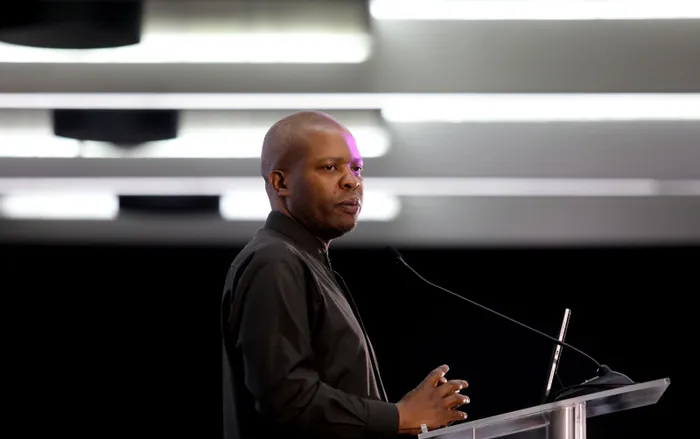Unlocking job creation: The vital role of manufacturing in Tshwane's economic strategy

Gauteng MEC for Finance and Economic Development, Lebogang Maile, calls on the City of Tshwane to incorporate the manufacturing sector into its economic strategy to boost the local economy and create jobs.
Image: Oupa Mokoena / Independent Newspapers
To boost the local economy, combat poverty, and create jobs, the City of Tshwane should incorporate the manufacturing sector into its economic strategy.
Gauteng MEC for Finance and Economic Development, Lebogang Maile, expressed this view during the inaugural Tshwane Investment Summit, held at Menlyn on Wednesday.
He was responding to a presentation by Member of the Mayoral Committee, Sarah Mabotsa, who outlined the city's economic revitalisation strategy targeting between R17 billion and R26bn in investments.
Part of the strategy aims to create 80,000 jobs for locals and boost Tshwane's economic growth to 3.9% by 2029.
The strategy identifies 10 priority sectors, including tourism, construction, automotive, agriculture, and agro-processing.
Maile remarked that the manufacturing sector is notably absent from the strategy, despite the city's significant role in this sector.
“You can’t just have 10 sectors, you must have manufacturing as one of those because it is very important for economic growth, fighting poverty, and job creation,” he said.
He pointed out that Tshwane accounts for a substantial share of manufacturing jobs in Gauteng.

Tshwane Mayor Nasiphi Moya announced that the city will target R5 billion in new project investments by December 31, 2025.
Image: Oupa Mokoena / Independent Newspapers
“Our economic reality must not be thumb-sucked; it must be based on the reality that is happening on the ground.”
Maile stated that Tshwane contributes to 220 jobs for every 1,000 manufacturing jobs in Gauteng.
“You need to consolidate and build on it so that you can increase. This reach spans across from food and beverages, chemical products, automotive and transport equipment, electrical machinery and components,” he said.
Furthermore, he noted that in 2024, Tshwane's exports reached R200bn, accounting for nearly a third of Gauteng's total exports.
Maile added that imports exceeded R197bn, establishing Tshwane as a hub for both production and consumption.
He highlighted that key challenges identified by investors are issues related to bulk infrastructure, zoning, energy constraints, water use licences, community challenges, completion of feasibility studies, and environmental impact assessment.
Tshwane Mayor Nasiphi Moya said the city aims to attract R5bn in new project investments by December 31, 2025, as part of its economic revitalisation strategy.
“This summit is where we open our doors to the world and invite investors, entrepreneurs, and partners to help build a stronger Tshwane economy,” she said.
She explained that the city's finances are stretched, and its capital budget is not keeping pace with development needs.
“An average of R2.5 billion in capital investment each year will take 36 years to fund the infrastructure that Tshwane needs in the next decade,” Moya said.
While the city's economic revitalisation strategy officially has 10 key priorities, Moya noted that manufacturing is effectively the 11th priority, with a specific focus on Pretoria West.
She mentioned that city strategic assets such as Rooiwal and Pretoria West power stations are open for investment through a structured agreement to restore their capacity and ensure energy security, including the Pretoria Showground.
“Wonderboom National Airport holds potential to become a logistics hub directly connecting Tshwane to the world with over 340 hectares of land. It can drive investment in aviation, cargo, and related industries,” she said.
She highlighted the city's strategic assets, including the Tshwane Fresh Produce Market, which is already the largest in South Africa and has the potential to become a continental leader in agro-processing.
The city is also looking to commercialise the Bon Accord Quarry to supply materials needed for infrastructure renewal, and release inner-city land parcels and derelict buildings for housing, student accommodation, and commercial development.
Moya said: “These assets are more than buildings or land. They are catalysts for growth. Each one is being packaged with a clear business case, timelines and transparent processes to ensure that investment delivers real results.”